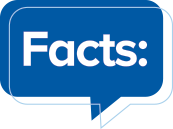AEO Research
AEO is a research leader in the microbusiness ecosystem. Our research and data deliver critical insights on underserved microbusinesses in the U.S.

We are:
- Data-driven
- Equity-focused
- Cutting-edge
SUPPORTING MICROBUSINESSES CREATES POSITIVE RIPPLES THROUGHOUT COMMUNITIES.
Research Publications
Our publications cover a diverse array of the issues most important to the microbusiness ecosystem. Here you will find reports, briefs and other insights that drive the conversation through rigorous research.
Research Data & Tools
We bring the latest data and tools to service providers, community lenders, policymakers, and other ecosystem stakeholders to help them navigate the microbusiness landscape.
43.6 million people work in microbusiness (one-quarter of the workforce)
Microbusinesses make up 96% of all U.S. Businesses
Nearly 44% of microbusinesses are women-owned
CLICK HERE TO SIGN UP FOR THE AEO NEWSLETTER.




